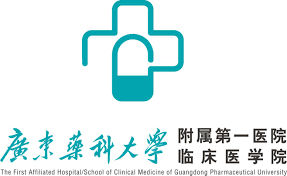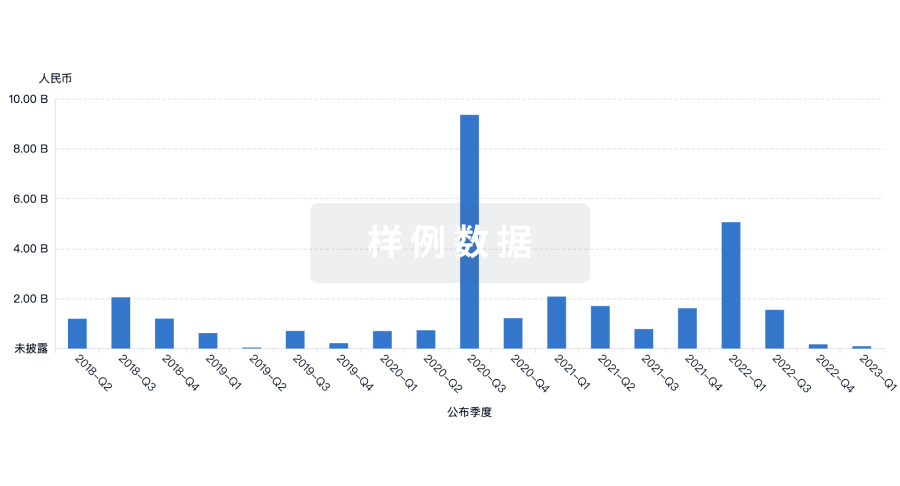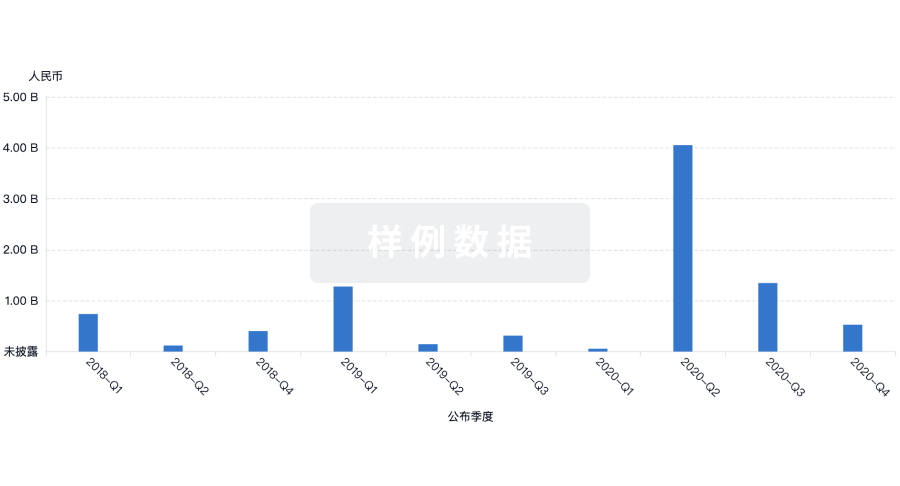预约演示
更新于:2025-05-07

The 1St Affiliated Hosp of Guangdong Pharm University
更新于:2025-05-07
概览
标签
内分泌与代谢疾病
消化系统疾病
皮肤和肌肉骨骼疾病
小分子化药
化学药
关联
2
项与 广东药科大学附属第一医院 相关的药物靶点 |
作用机制 ERRα agonists |
在研机构 |
原研机构 |
在研适应症 |
非在研适应症- |
最高研发阶段临床前 |
首次获批国家/地区- |
首次获批日期- |
靶点- |
作用机制 肠道菌群调节剂 |
在研机构 |
原研机构 |
在研适应症 |
非在研适应症- |
最高研发阶段临床前 |
首次获批国家/地区- |
首次获批日期- |
1
项与 广东药科大学附属第一医院 相关的临床试验ChiCTR2300077478
Study on the effects of compound probiotics combined with metformin on blood glucose and blood lipids in people with type 2 diabetes mellitus combined with high BMI - Study on the improvement of glycolipid metabolism disorders by compound probiotics
开始日期2024-03-11 |
申办/合作机构 |
100 项与 广东药科大学附属第一医院 相关的临床结果
登录后查看更多信息
0 项与 广东药科大学附属第一医院 相关的专利(医药)
登录后查看更多信息
62
项与 广东药科大学附属第一医院 相关的文献(医药)2025-12-31·Renal Failure
Efficacy and potential pharmacological mechanism of
Astragalus-Salvia miltiorrhiza
combination in diabetic nephropathy: integrating meta-analysis, network pharmacology, molecular docking, and experimental validation
Article
作者: Chen, Zedong ; Xiao, Ya ; Jiang, Pingping ; Zhu, Mingmin ; Zhong, Jingying ; Zhao, Xiaoshan ; Yuan, Jing ; Chen, Jianfeng ; Liang, Huiyu ; Lin, Shufan
2025-07-01·European Journal of Pharmacology
Chlorogenic acid alleviates DNCB-induced atopic dermatitis by inhibiting the Akt1/NF-κB signaling pathway
Article
作者: Liu, Bing ; Zeng, Cheng ; Zhang, Yan ; Nie, Wenkai ; Zhao, Xuan ; Yang, Huiwen
2025-06-01·Patient Education and Counseling
Influence of patient-oriented organizational climate on physicians’ patient-centered behavior: The mediating role of patient-centeredness self-efficacy
Article
作者: Kong, Kangmei ; Li, Ting ; Wang, Xingming ; Chen, Dongxue ; Shi, Lushaobo ; Zhang, Yucai ; Fu, Manru ; Wang, Dong
6
项与 广东药科大学附属第一医院 相关的新闻(医药)2025-02-20
·药闻康策
☝ 点击上方 一键预约 ☝
最新最热的医药健康新闻政策
“集采中选的仿制药这么便宜,效果好吗?”
自国家药品集采政策实施以来,这类疑问一直存在。国家组织集采的药品,全部通过了质量和疗效一致性评价,即仿制药的药物活性成分、给药途径、剂型和规格等与原研药相同,并且在体内的吸收代谢、血药浓度等与原研药一致,做到生物等效,这也是国际上公认的最严格标准,与美国、欧盟等使用的方法一致。但是,仍有一些人提出生物等效不等于临床等效。实际上,几乎所有国家都认为通过一致性评价的仿制药和原研药在临床治疗上是等效的。
医学发展是无止境的,对科学的追求是无止境的,有一批医院和学者过去几年一直在努力通过科学的设计、大样本的比对,用客观的患者诊疗数据验证集采药品在临床真实世界中的疗效和安全性。近期,“中国医疗保险”网站集中发布了学术期刊发表的101篇有关仿制药与原研药比较的学术论文,经分析,其中92篇为医疗机构根据一手资料开展的临床真实世界研究。我们来揭秘国家集采药品的真实世界研究,用来自64家三甲医院的92篇真实世界研究文献的科学数据告诉你:国家集采药,可以放心用!
一、真实世界研究是什么?
真实世界研究是在真实临床诊疗环境下收集到的与患者有关的数据,通过对数据进行分析能够获得药品疗效和安全性的临床证据。对国家集采药品开展真实世界研究,能够切实了解国家集采药品在临床中的“实战效果”。
截至目前,全国范围内至少已有64家三甲医院针对国家集采药品开展相关研究,包含首都医科大学宣武医院、上海交通大学医学院附属瑞金医院等权威机构,全面覆盖了我国东部、中部、西部和东北四大地区。这些医院不仅拥有丰富的临床经验,还在医药研究领域具有很高的影响力和权威性。92篇学术论文(涉及54个集采品种)分别发表在了《Drug Design, Development and Therapy》、《中国药房》等国内外知名期刊,研究结果对于临床实践具有重要的参考价值。
二、哪些集采药被重点“盯梢”?四大类药品全解析
1、降压药:效果不缩水
常见降压药包括苯磺酸氨氯地平、厄贝沙坦等,国内现已有7家三级医院开展了8项真实世界研究,分别是氨氯地平(上海交通大学医学院附属瑞金医院、中山大学附属第七医院、西安交通大学第一附属医院、曲靖市第二人民医院)、缬沙坦氨氯地平(山东省滕州市中医医院)、厄贝沙坦(曲靖市第二人民医院)、厄贝沙坦氢氯噻嗪(中山市人民医院)、培哚普利(东莞东华医院)。以苯磺酸氨氯地平为例,上海交通大学医学院附属瑞金医院的研究表明,针对原发性高血压患者,采用原研及仿制氨氯地平治疗均能获得较好效果,均可有效降低血压水平,且安全性相当。西安交通大学第一附属医院在2024年开展的一项真实世界研究结果显示:接受苯磺酸氨氯地平原研药和仿制药进行高血压治疗的患者临床疗效、用药依从性优良率、不良反应发生率无统计学差异,原研与仿制苯磺酸氨氯地平治疗高血压的有效性、用药依从性和安全性均相当。同年,中山大学附属第七医院的一项研究表明,集采苯磺酸氨氯地平片在治疗高血压临床效果与安全性与苯磺酸氨氯地平片原研药基本一致的基础上,还具有经济实用等特点,有助于提高患者用药依从性以及高血压控制率,值得推广应用。
2、降糖药:血糖稳得住
保持正常的血糖水平对维护身体健康至关重要,国内现已有7家三甲医院开展了8项真实世界研究,分别是阿卡波糖(广东药科大学附属第一医院)、二甲双胍(首都医科大学宣武医院、中山大学附属第七医院)、甘精胰岛素(山东中医药大学附属医院)、格列美脲(上海交通大学医学院附属瑞金医院、首都医科大学宣武医院)、维格列汀(珠海市人民医院、南京鼓楼医院)。二甲双胍是目前全球应用最广泛的口服降血糖药,用于治疗糖尿病已有60多年历史。首都医科大学宣武医院通过比较数千例糖尿病患者发现仿制药和原研药的血糖达标率(即HbA1c<7%)并无统计学差异。
3、抗菌药:感染治得好
目前国内现已有22家三甲医院针对抗癌药物开展了23项真实世界研究,分别是伏立康唑(广西医科大学第一附属医院、解放军总医院、中山大学附属第一医院)、利奈唑胺(浙江大学医学院附属第一医院、复旦大学附属华山医院、川北医学院附属医院)、莫西沙星(河北医科大学第一医院、连云港市第一人民医院、中国科学技术大学附属第一医院)、替加环素(昆明市第一人民医院、四川省人民医院)、头孢地尼(首都医科大学宣武医院)、头孢呋辛钠(安徽省合肥市第二人民医院、浙江省嘉兴市妇幼保健院)、头孢哌酮舒巴坦(大理大学第一附属医院、攀枝花市中心医院、宿迁市第一人民医院)、美罗培南(南华大学附属长沙中心医院、新疆维吾尔自治区人民医院)、头孢曲松(昆明市第一人民医院、山东第一医科大学第一附属医院)、头孢他啶(安宁市第一人民医院)、左氧氟沙星(福建医科大学附属协和医院)。
其中,头孢哌酮舒巴坦作为我国多个领域的抗感染指南推荐为首选的经验性用药,在治疗多种耐药革兰阴性菌感染中发挥重要作用。三所三甲医院的研究结果均显示,集采仿制药与原研药具有相似有效性和安全性。此外,作为多种感染的一线治疗药物的头孢曲松,山东第一医科大学第一附属医院对比了集采仿制药与原研药的有效性和安全性。研究结果显示虽然3种感染的细菌清除率低于原研药,但在临床有效率、死亡率和放弃治疗率方面仿制药与原研药两者相当,仿制药肝功能、肾功能、血常规异常同时发生的患者比例低于原研药。
4、抗癌药:疗效不打折
癌症作为全球范围内最严重的健康问题之一,引起了广泛的关注和研究。目前国内现已有7家三甲医院针对抗癌药物开展了10项真实世界研究,分别是阿比特龙(中国医学科学院北京协和医学院肿瘤医院)、阿扎胞苷(首都医科大学宣武医院)、奥沙利铂(暨南大学附属第一医院)、吉非替尼(淮北市人民医院、德州市人民医院)、甲磺酸伊马替尼(河北医科大学第四医院)、卡培他滨(中国医学科学院北京协和医学院肿瘤医院)、培美曲塞(中国医学科学院北京协和医学院肿瘤医院)、硼替佐米(海军军医大学第二附属医院)、替吉奥(首都医科大学宣武医院)。研究结果显示集采仿制药与原研药的疗效并无统计学差异。
例如治疗非小细胞肺癌的口服靶向药吉非替尼,已有学者采用来自不同地区的数据证实国产吉非替尼与原研药治疗EGFR敏感突变的晚期NSCLC疗效及不良反应相当,而国产吉非替尼的治疗费用不到原研吉非替尼的1/2(国产吉非替尼治疗费用为2118.43±137.93元/月,原研吉非替尼为5945.48±247.48元/月)。此外,电影《我不是药神》中特效药“格列宁”的原型为甲磺酸伊马替尼(格列卫),是治疗慢性粒细胞白血病的重要用药。河北医科大学第四医院通过比较服用甲磺酸伊马替尼仿制药和原研药胃肠间质瘤患者的血药浓度与不良反应,结果显示仿制药和原研药的安全性无差异。
三、为什么会有人觉得仿制药“不好用”呢?
从64家三甲医院针对国家集采药品开展的92项真实世界研究的研究结果来看,原研药和仿制药的疗效、安全性并无统计学差异。但为什么网络上和身边部分群众有时会反映自身在用药过程中存在药品疗效不好的感受呢?原因有三。
1、个体差异
在用药治疗的过程中,不同的人体质不同,所以就可能会产生个案差异。以盐酸二甲双胍片为例,研究证明原研药和集采仿制药的疗效无统计学差异(糖化血红蛋白(<7%)的达标率,原研组78.9%、集采仿制组83.4%),也就是说集采的仿制药与原研药疗效相同,不论患者使用的是原研药还是仿制药,都将会有80%左右的患者控制糖化血红蛋白达标,也将会有20%左右的患者疗效不佳。但是如果仅从20%疗效不佳的患者中选取个案来“证明”仿制药的疗效不佳,是不科学不合理的。因为想要在患者中找出仿制药疗效不佳的个案并不困难,找出原研药疗效不佳的例子也不困难,不能单一的使用个案情况来“证明”一个药品的好与坏,而要看这个药品在所有患者中的总体治疗效果。
2、“越贵越有效”的观念并不适用于药品这种特殊商品
在日常生活中,一些消费者会以为药品“越贵越有效”。但药品不同于一般消费品,其生产成本、销售费用和真实的盈利水平往往迥异于人们对日常消费品的理解,药品的价格和质量也没有必然联系。国家药品集采降低了药品价格,但中选药品的质量都始终受到监管部门的严控。药品质量安全是监管的底线,药监部门一直对集采中选药品的质量进行严格监管,每年都会对国家集采药品实行中选企业检查和中选品种抽检两个“全覆盖”,目前覆盖了已使用的国家集采所有品种和涉及的600多家药品生产企业。截至目前,已有9个药品因质量风险被取消中选资格,其中6个是进口药(含3个原研药)、3个是国产药,相关企业均受到严肃处理。
3、传播规律
没有任何一种药物是100%有效的。在仿制药和原研药都对大部分人有效的情况下,往往是感受到疗效差的少部分人体会深刻、更愿意反映出来,而用药好的“大多数”患者一般不会去主动反映。在信息传播的过程中,听起来具有冲击力的说法和个例通常比看起来“枯燥无趣”的科学求证更具有传播力。
四、小结
全国64家三甲医院的真实世界研究证明,国家集采药靠谱!总体来看,国家集采的仿制药与原研药在疗效和安全性上并无差异。有关部门将持续完善集采政策、严格坚持质量标准、持之以恒加强监管,将人民健康放在首位,持续推进健康中国战略实施,使人民群众有更多获得感、幸福感、安全感。
来源 | 中国医疗保险 作者 | 路云
药闻康策
新媒体矩阵微信公众号
点击下方 一键关注
【免责声明】
1.“药闻康策”部分文章信息来源于网络转载是出于传递更多信息之目的,并不意味着赞同其观点或证实其内容的真实性。如对内容有疑议,请及时与我司联系。2.“药闻康策”致力于提供合理、准确、完整的资讯信息,但不保证信息的合理性、准确性和完整性,且不对因信息的不合理、不准确或遗漏导致的任何损失或损害承担责任。3.“药闻康策”所有信息仅供参考,不做任何商业交易或医疗服务的根据,如自行使用“药闻康策”内容发生偏差,我司不承担任何责任,包括但不限于法律责任,赔偿责任。
欢迎转发分享、点赞、点在看
一致性评价带量采购
2025-01-20
·肿瘤界
点击蓝字 关注我们
2025年01月13日,上海市胸科医院陆舜教授牵头全国54家研究中心(详见文末)共同参与的一项重组全人抗PD-L1单克隆抗体注射液(索卡佐利单抗)或安慰剂联合卡铂和依托泊苷一线治疗广泛期小细胞肺癌的随机、双盲、安慰剂对照、多中心的III期临床研究(方案编号:ZKAB001-LEES-2020-07,NCT04878016)的阳性结果在国际顶级期刊Signal Transduction and Targeted Therapy(IF:40.8)重磅发布,题为“A multicenter, randomized, double-blind, placebo-controlled phase 3 study of Socazolimab or placebo combined with carboplatin and etoposide in the first-line treatment of extensive-stage small cell lung cancer”。
试验设计
本研究是一项随机、双盲、安慰剂对照的多中心III期研究。符合入选资格的受试者将按1:1比例随机进入试验组:索卡佐利单抗+卡铂+依托泊苷或者对照组:安慰剂+卡铂+依托泊苷,每3周为1个治疗周期。分层因素包括性别(男/女),PS评分(0/1)、脑转移(是/否)。主要目的为评价索卡佐利单抗联合卡铂和依托泊苷对比安慰剂联合卡铂和依托泊苷一线治疗广泛期小细胞肺癌的总生存期(OS)。
从2021年7月15日至2022年5月12日,共筛选了636例患者(图1)。其中498例受试者进行了随机分组,496例受试者接受了至少一次索卡佐利单抗组或安慰剂组治疗,截止2023年10月13日,索卡佐利单抗组和安慰剂组中位随访时间分别为20.47个月和20.63个月。
图1 入组治疗概况
*索卡唑单抗或安慰剂允许的最长治疗时间为2年。一名患者因达到最长用药时间2年而停止治疗。
#FAS集:所有接受至少一次研究治疗的受试者。
研究结果
主要终点OS
截至2023年10月13日,主要终点OS分析,FAS中索卡佐利单抗组中死亡的受试者为182例(73.4%),中位总生存时间为13.90个月(95%CI: 12.22, 15.34),1年和2年生存率分别为56.8%(95%CI: 50.4%, 62.7%)和20.7%(95%CI: 14.8%, 27.3%)(图2a)。安慰剂组死亡的受试者为200例(80.6%),中位总生存时间为11.58个月(95%CI: 10.64, 12.81),1年和2年生存率分别为48.8%(95%CI: 42.4%, 54.8%)和5.9%(95%CI: 0.8%, 18.9%)。结果表明初治的广泛期小细胞肺癌(ES-SCLC)患者中,与安慰剂联合卡铂+依托泊苷(EC)相比,索卡佐利单抗与EC联合取得了OS获益(HR=0.799,单侧P=0.0158),总死亡风险平均降低了20.1%,中位OS延长了2.32个月(13.90个月 vs. 11.58个月)。同时,索卡佐利单抗组体现出长期生存优势(24个月的OS率:20.7%vs. 5.9%)。
图2a 总生存期(OS)的Kaplan-Meier曲线(全分析集)
OS亚组分析
OS亚组分析森林图所示(图2b),男性、年龄<65岁,无肝转移、无脑转移、基线PS 0分、基线PD-L1表达<1%的亚组均显示索卡佐利单抗组获益。进一步以年龄<65岁的男性作为分析对象,索卡佐利单抗联合EC组中位总生存期为15.7个月(95%CI: 14.06, 17.25),对照组中位总生存期11.37个月(95%CI: 9.99, 12.85),延长患者生存期超过4个月。
图2b 总生存期(OS)按照亚组分析的森林图(全分析集)
次要终点PFS
IRC评估的PFS:受试者中索卡佐利单抗组mPFS为5.55个月(95%CI: 5.06, 5.82)。安慰剂组为4.37个月(95%CI: 4.27, 4.70)。纳入随机分层因素进行的分层Log-rank和Cox比例风险模型分析结果显示索卡佐利单抗组的无进展生存期显著长于安慰剂组(P<0.0001),索卡佐利单抗组相对于安慰剂组的HR为0.569(95%CI: 0.457, 0.708)。次要终点PFS也进一步支持索卡佐利单抗组的临床获益,基于FAS人群,IRC评价的PFS显示索卡佐利单抗组降低了43.1%的疾病进展或死亡风险(HR=0.569,P<0.0001),PFS延长了1.18个月(图3a)。
图3a IRC评估的无进展生存期(PFS)的Kaplan-Meier曲线(全分析集)。
PFS亚组分析
IRC评估的无进展生存期的亚组分析森林图所示(图3b),除了脑转移=是和疾病分期=III的亚组人群中显示索卡佐利单抗组无获益外,其他亚组人群均显示出索卡佐利单抗组的无进展生存期获益优于安慰剂组。
图3b IRC评估的无进展生存期(PFS)按照亚组分析的森林图(全分析集)
研究结论
这项III期临床试验的结果表明,在广泛期小细胞肺癌的一线治疗中,与安慰剂联合EC相比,索卡佐利单抗联合EC的治疗,显著延长了患者的生存时间,也未发现新的安全风险。
索卡佐利单抗是全人抗PD-L1单克隆抗体,筛选自人源G-MABTM抗体库,对于人类PD-L1蛋白有极高的特异性及亲和力。通过结合PD-L1,阻断PD-1/PD-L1信号通路,进而消除肿瘤逃逸机制,使T细胞或其介导的肿瘤免疫系统正常应答,达到抑制肿瘤生长的作用。此外,索卡佐利单抗保留了完整Fc端,抗体依赖的细胞介导的细胞毒性(ADCC)作用作为次要作用机制,Fc段与免疫细胞如NK细胞结合,促进免疫细胞对肿瘤细胞的直接杀伤作用,进一步增加抗体抑制肿瘤的生长能力,可能是对PD-L1表达状态全人群均有效的机制之一。广泛期小细胞肺癌的III期临床试验数据已提交CDE进行注册上市申报。随着新适应症的增加,预示着索卡佐利单抗会给更多的患者带去更多的治疗获益。
54家研究中心
● 上海市胸科医院
● 浙江省肿瘤医院
● 浙江大学医学院附属第一医院
● 四川大学华西医院
● 湖南省肿瘤医院(胸内二科)
● 湖南省肿瘤医院(胸内一科)
● 中山大学附属第一医院
● 郑州大学第一附属医院
● 河南省肿瘤医院
● 南昌大学第一附属医院
● 福建省肿瘤医院
● 云南省肿瘤医院
● 徐州市中心医院
● 南京大学医学院附属鼓楼医院
● 江苏省苏北人民医院
● 安徽省胸科医院
● 安徽省肿瘤医院
● 安徽医科大学第二附属医院
● 浙江大学医学院附属第二医院
● 复旦大学附属华山医院
● 上海市肺科医院
● 中国科学院大学宁波华美医院(宁波市第二医院)
● 南阳医学高等专科学校第一附属医院
● 首都医科大学附属北京胸科医院
● 天津市肿瘤医院
● 天津医科大学总医院
● 广西医科大学附属肿瘤医院(广西壮族自治区肿瘤防治研究所)
● 中国人民解放军陆军军医大学第二附属医院
● 遂宁市中心医院
● 临沂市肿瘤医院
● 潍坊市人民医院
● 江南大学附属医院(无锡市第四人民医院)
● 赣南医学院第一附属医院
● 甘肃省肿瘤医院(甘肃省医学科学研究院)
● 川北医学院附属医院
● 西安交通大学第一附属医院
● 衡水市人民医院(哈励逊国际和平医院)
● 吉林大学中日联谊医院
● 辽宁省肿瘤医院
● 新乡医学院第一附属医院
● 陕西省肿瘤医院
● 广东药科大学附属第一医院
● 中山大学肿瘤防治中心
● 哈尔滨医科大学附属肿瘤医院
● 佳木斯市肿瘤医院(佳木斯市结核病防治院)
● 内蒙古医科大学附属医院
● 金华市中心医院
● 重庆医科大学附属第一医院
● 湖北省人民医院(武汉大学人民医院)
● 南华大学附属第一医院
● 襄阳市中心医院
● 沈阳市第十人民医院
● 揭阳市人民医院
● 南阳市第二人民医院
推荐阅读
● STTT(IF=40.8)丨陆舜教授领衔全国多中心ctDNA研究 早期识别NSCLC免疫治疗长获益人群
● NEJM发表陆舜领衔NSCLC研究,奥希替尼王座动摇?
● 重磅!陆舜教授领衔临研成果在国际顶刊《新英格兰医学杂志》发表,引领全球肺癌靶向治疗新热潮
声明:本文由“肿瘤界”整理与汇编,欢迎分享转载,如需使用本文内容,请务必注明出处。
来源:上海市胸科医院肿瘤科官微
原标题:陆舜教授牵头的索卡佐利单抗一线治疗广泛期小细胞肺癌III期研究阳性结果重磅发布
排版:lagertha
校对:松月
临床3期临床结果临床成功
2024-11-12
·复宏汉霖
临床招募
由上海复宏汉霖生物技术股份有限公司发起的“一项比较 HLX10(重组抗 PD-1 人源化单克隆抗体注射液)或安慰剂联合化疗(卡铂/顺铂-依托泊苷)同步放疗在局限期小细胞肺癌(LS-SCLC) 患者中的抗肿瘤疗效和安全性的随机、双盲、国际多中心、III 期研究”正在招募受试者。HLX10是由上海复宏汉霖生物技术股份有限公司研发的一种作用于程序性细胞死亡蛋白-1(PD-1)的人源化单克隆抗体。PD-1是一种存在于免疫细胞表面的蛋白,能够抑制免疫细胞杀死癌细胞。研究药物作用于PD-1,阻止其抑制免疫细胞,从而使免疫细胞能够攻击癌细胞。现有安全性数据和 PK 数据证明 HLX10 在患者中的安全性是可接受的。该研究为国际多中心临床试验,已在中国多家研究中心获得伦理批准。
申办方
上海复宏汉霖生物技术股份有限公司
如果您符合以下入选标准
您将有可能加入这项临床试验
年龄≥18岁的男性或女性;
组织学确诊为小细胞肺癌;
提供符合要求的肿瘤组织以进行PD-L1表达水平测定。由中心实验室评定一个可评价的PD-L1表达类别(阴性:TPS<1%,阳性:TPS≥1%,或不可评价/不可用)。
由研究者根据RECIST 1.1要求评估的至少有一个可测量病灶。
既往未接受过针对小细胞肺癌的系统性抗肿瘤治疗,包括但不局限于放疗、化疗、免疫治疗。
注:本临床试验遵守《药物临床试验质量管理规范》和《赫尔辛基宣言》。
计划开展的研究中心清单
中心名称
城市
主要研究者
联系人
联系方式
山东省肿瘤医院
济南
于金明
刘老师
15753922452
河南省肿瘤医院
郑州
赵艳秋
俞老师
孙老师
18790078148
13903752297
湖南省肿瘤医院
长沙
邬麟王晖
陈老师
15307478457
唐山市人民医院
唐山
杨俊泉
李老师
15133950578
临沂市肿瘤医院
临沂
石建华
匡老师
17805493601
复旦大学附属肿瘤医院
上海
樊旼
朱老师
18512144099
佳木斯市肿瘤结核医院
佳木斯
孙红梅
李老师
18845486660
浙江大学医学院附属第二医院
杭州
李雯
张老师
15067162688
南昌大学第一附属医院
南昌
温桂兰
朱老师
15879069090
浙江大学医学院附属邵逸夫医院
杭州
陈恩国
张老师
18846438725
安徽省胸科医院
合肥
闵旭红
王老师
15255188559
郑州大学第一附属医院
郑州
李醒亚
刘老师
15236372837
天津市肿瘤医院
天津
任秀宝
赵路军
王老师
18920541227
浙江大学医学院附属第一医院
杭州
严森祥
艾老师
18358117643
18358117643
云南省肿瘤医院
昆明
李高峰
阮老师
18313741605
广东药科大学附属第一医院
广州
王希成
李老师
13828172683
宁夏医科大学总医院
银川
赵仁
武老师
15009506355
青岛大学附属医院
青岛
王静
袁老师
13210260743
福建省肿瘤医院
福州
徐海鹏
李老师
19859820395
西安交通大学第一附属医院
西安
姚煜
范老师
13720588675
哈尔滨医科大学附属肿瘤医院
哈尔滨
于雁
张老师
17614663816
温州医科大学附属第一医院
温州
李玉苹
徐老师
13136562778
中南大学湘雅二医院
长沙
马芳
邵老师
17347037160
常德市第一人民医院
常德
吴志军
龚老师
15387369192
宝鸡市中心医院
宝鸡
赵亚宁
李老师
15332356099
北京大学肿瘤医院
北京
方健
王老师
13844663910
山西省肿瘤医院
太原
李红卫
唐老师
13636691197
蚌埠一附院
蚌埠
张亚军
朱老师
18856222176
徐州市中心医院
徐州
周云
朱老师
18505162527
浙江省台州医院
台州
吕冬青
潘老师
18867702652
中国医学科学院肿瘤医院
北京
惠周光
门老师
15520644201
赣南医学院第一附属医院
赣州
李杰
付老师
15870709688
重庆市肿瘤医院
重庆
王颖
胡老师
15223390110
复旦大学附属中山医院
上海
张勇
肖老师
18875211675
河北大学附属医院
保定
臧爱民
王老师
15330706956
苏北人民医院
扬州
汪步海
刘老师
13373689619
浙江省肿瘤医院
杭州
王跃珍
明老师
18161909192
武汉大学中南医院
武汉
谢丛华
胡老师
13545239509
十堰太和医院
十堰
王梅芳
汤老师
18271619605
中南大学湘雅医院
长沙
周蓉蓉
唐老师
18174606781
中山大学肿瘤防治中心
广州
蔡玲
李老师
13692421945
广西医科大学附属肿瘤医院
南宁
黄江琼
李老师
15703415953
桂林医学院第二附属医院
桂林
李碧慧
梁老师
15980532592
沈阳市胸科医院(沈阳市第十人民医院)
沈阳
李茵茵
李老师
18640109207
宜宾市第二人民医院
宜宾
钟俐强
杨老师
18784623960
池州市人民医院
池州
宋文灿
汪老师
18654119065
吉林省肿瘤医院
长春
程颖
王老师
13894103499
厦门大学附属第一医院
厦门
林勤
黄老师
17681314677
黄山市人民医院
黄山
王根和
吴老师
18655930223
关于复宏汉霖
复宏汉霖(2696.HK)是一家国际化的创新生物制药公司,致力于为全球患者提供可负担的高品质生物药,产品覆盖肿瘤、自身免疫疾病、眼科疾病等领域,已有6款产品在中国获批上市,3款产品在国际获批上市,24项适应症获批,4个上市申请分别获中国药监局、美国FDA和欧盟EMA受理。自2010年成立以来,复宏汉霖已建成一体化生物制药平台,高效及创新的自主核心能力贯穿研发、生产及商业运营全产业链。公司已建立完善高效的全球创新中心,按照国际药品生产质量管理规范(GMP)标准进行生产和质量管控,不断夯实一体化综合生产平台,其中,公司商业化生产基地已相继获得中国、欧盟和美国GMP认证。
复宏汉霖前瞻性布局了一个多元化、高质量的产品管线,涵盖50多个分子,并全面推进基于自有抗PD-1单抗H药汉斯状®的肿瘤免疫联合疗法。截至目前,公司已获批上市产品包括国内首个生物类似药汉利康®(利妥昔单抗)、自主研发的中美欧三地获批单抗生物类似药汉曲优®(曲妥珠单抗,美国商品名:HERCESSI™,欧洲商品名:Zercepac®)、汉达远®(阿达木单抗)、汉贝泰®(贝伐珠单抗)以及汉奈佳®(奈拉替尼),此外,创新产品汉斯状®(斯鲁利单抗)已获批用于治疗微卫星高度不稳定(MSI-H)实体瘤、鳞状非小细胞肺癌、广泛期小细胞肺癌和食管鳞状细胞癌,并成为全球首个获批一线治疗小细胞肺癌的抗PD-1单抗。公司亦同步就16个产品在全球范围内开展30多项临床试验,对外授权全面覆盖欧美主流生物药市场和众多新兴市场。
喜欢本文内容
点击下方按钮·分享 ·收藏 ·点赞 ·在看
临床3期申请上市临床申请免疫疗法核酸药物
100 项与 广东药科大学附属第一医院 相关的药物交易
登录后查看更多信息
100 项与 广东药科大学附属第一医院 相关的转化医学
登录后查看更多信息
组织架构
使用我们的机构树数据加速您的研究。
登录
或

管线布局
2025年11月30日管线快照
管线布局中药物为当前组织机构及其子机构作为药物机构进行统计,早期临床1期并入临床1期,临床1/2期并入临床2期,临床2/3期并入临床3期
临床前
2
登录后查看更多信息
当前项目
| 药物(靶点) | 适应症 | 全球最高研发状态 |
|---|---|---|
Eleutheroside E | 骨质疏松症 更多 | 临床前 |
JND003 ( ERRα ) | 非酒精性脂肪性肝炎 更多 | 临床前 |
登录后查看更多信息
药物交易
使用我们的药物交易数据加速您的研究。
登录
或

转化医学
使用我们的转化医学数据加速您的研究。
登录
或

营收
使用 Synapse 探索超过 36 万个组织的财务状况。
登录
或

科研基金(NIH)
访问超过 200 万项资助和基金信息,以提升您的研究之旅。
登录
或

投资
深入了解从初创企业到成熟企业的最新公司投资动态。
登录
或

融资
发掘融资趋势以验证和推进您的投资机会。
登录
或

生物医药百科问答
全新生物医药AI Agent 覆盖科研全链路,让突破性发现快人一步
立即开始免费试用!
智慧芽新药情报库是智慧芽专为生命科学人士构建的基于AI的创新药情报平台,助您全方位提升您的研发与决策效率。
立即开始数据试用!
智慧芽新药库数据也通过智慧芽数据服务平台,以API或者数据包形式对外开放,助您更加充分利用智慧芽新药情报信息。
生物序列数据库
生物药研发创新
免费使用
化学结构数据库
小分子化药研发创新
免费使用